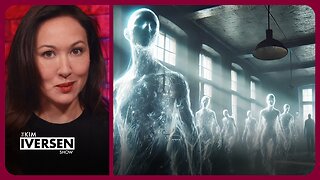Premium Only Content

How _Spider-Verse_ forced animation to evolve
How _Spider-Verse_ forced animation to evolve!
When you think of CGI animated films, you likely think of Pixar. The studio practically invented the genre with 1995’s Toy Story — the first CGI animated feature film.
After Toy Story, almost all animation studios wanted to follow in Pixar’s successful footsteps, straight down to their style. Many studios sought out “The Pixar Look”: extremely high quality, physically based, and in some cases almost photorealistic.
It’s an appealing approach that remains popular at the box office — but animated movies started looking kind of homogeneous. And while studios and independent artists tested out more stylized approaches in short films, no studio would commit to a feature-length animated movie that looked so different.
That is, until Sony Pictures/Imageworks took on Spider-Man: Into the Spider-Verse. Instead of chasing the look everyone was after, the team wanted to create something visually new. They did it with “non-photorealistic rendering.”
And since Spider-Verse, non-photorealism has taken off, with almost every studio set to incorporate it in the next five years. Check out our video to learn more about how non-photorealism works.
-
 40:20
40:20
The White House
1 hour agoPresident Trump Joins Law Enforcement and Military Personnel in Washington, D.C.
1710 -
 1:22:25
1:22:25
Kim Iversen
19 hours agoPsychic Medium Blows Lid Off "Interdimensional Beings" | Evil Spirits or Psyop?
20.6K35 -
 1:04:35
1:04:35
The Officer Tatum
2 hours agoLIVE: Trump SAVES DC, Letitia James Fine THROWN OUT + MORE | EP 160
2.05K3 -
 1:58:01
1:58:01
Redacted News
2 hours agoHIGH ALERT! Netanyahu Calls for Mass Censorship as Israel Prepares MASSIVE Invasion of Gaza City
68.3K41 -
 36:03
36:03
Kimberly Guilfoyle
3 hours agoA New Day in DC: Appeals Court Throws Out Witch Hunt Case, Live! | Ep248
14.9K9 -
 1:13:59
1:13:59
vivafrei
4 hours agoBig Tish Gets SPANKED! Appeal Court ANNULS $500 Million! Corruption at the FED? Trans Madness & MORE
81.7K23 -
 1:53:59
1:53:59
The Quartering
4 hours agoToday's Breaking News!
72.1K10 -
 5:38
5:38
Dr. Nick Zyrowski
10 days agoHow To Do a VITAMIN C Flush - Untold Truth!
33.5K2 -
 8:21
8:21
MattMorseTV
3 hours ago $2.91 earnedTrump just SCORED a $500,000,000 LEGAL WIN.
31K19 -
 1:00:00
1:00:00
The White House
8 hours agoVice President JD Vance Delivers Remarks at ALTA Refrigeration Inc
43.1K23